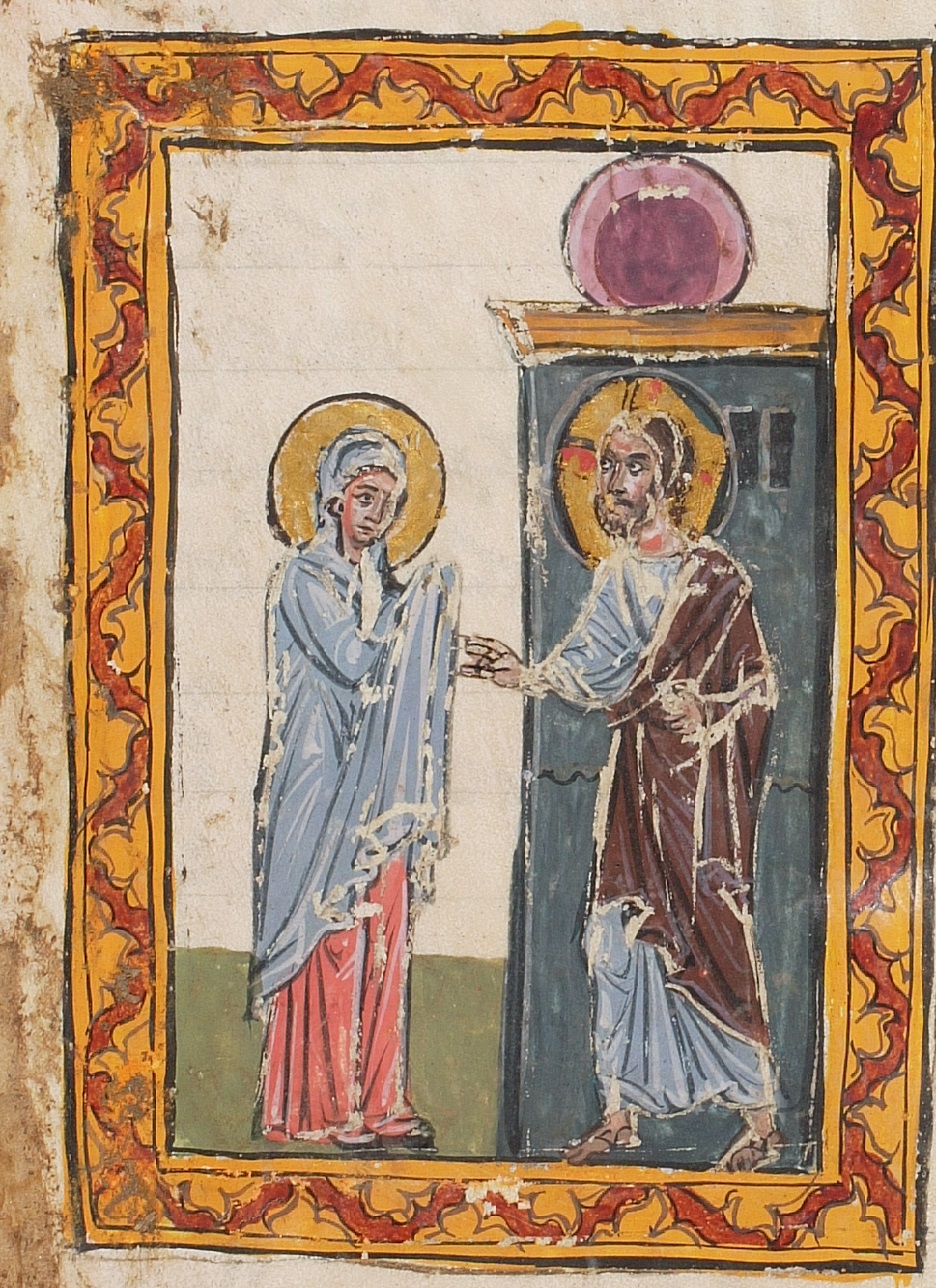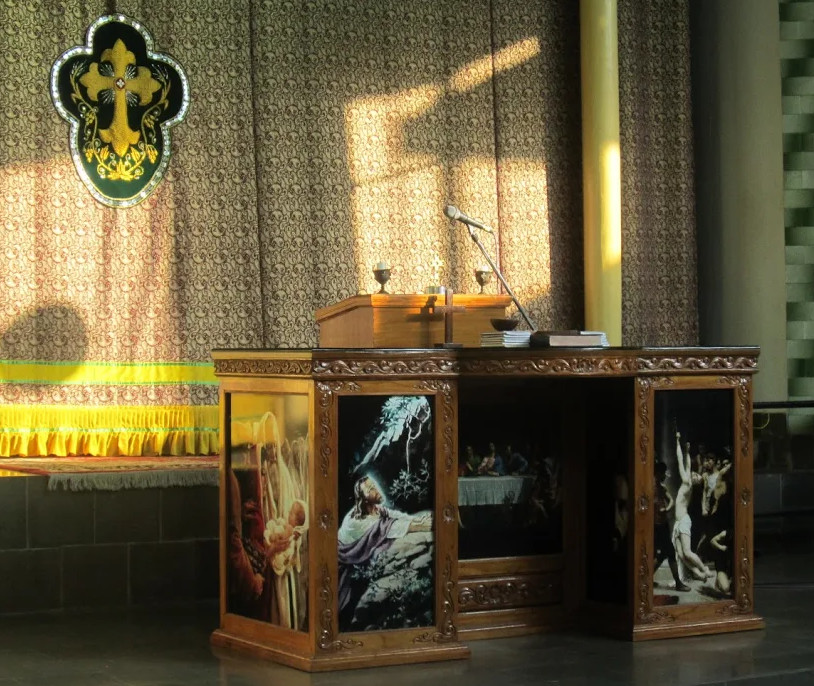
I wrote this because I wanted to understand why God lets us have disabilities. I have friends and family who have loved ones with disabilities, I visit nursing homes, and often pass people on the street who have some sort of special need. I am a second-year seminarian and it seemed like a good time to take a closer look.
Image is important. It determines one’s success or hardship in life. Individuals with physical and mental disabilities who do not look or act like the normal populace are shunned. On a mission trip to Kerala, India, we served senior citizens at the Bethsada Destitute Home for the Dying and children and adults with different disabilities at the Bethsada Mental Health Center. They were cast out from society.
Likewise, the Pharisees cast the leper, the adulterer, and the tax collector due to their disability of sin. Much to the Pharisees’ dismay, Jesus heals and eats with the unclean: the physically and mentally impaired as well as the sinners. Christ also restores the image of man that was distorted by sin by forgiving him. He tells him to “... sin no more.” By sinning no more, one strives to be with God and to be like God. Through his example, Christ illustrates how we are to treat people as they are an image of God. In turn, by achieving personhood, a person’s image and likeness become divine, a working progression to theosis.
God gives each human being his image and the potential for having his likeness. When humans were created, they were young and innocent like children, made in the image and likeness of God (Gen 1.26). However, when they disobeyed God, they saw imperfection in their image. Only after the Fall, “they knew that they were naked; and they sewed fig leaves” (Gen 3.7). St. John Chrysostom states, “But after the breaking of the law, then entered the scene both shame and awareness of their nakedness.” Sin changes the world (by entering it) and the human image. This image is being carried down through the generations (Gen 5.3). Even though humanity has fallen, human nature does not have sin.
Not all is lost! God endows all humans with the gift of spiritual personhood: free will, a rational being, and communion with him and others. Through our physical and mental actions, we can imitate God to achieve his likeness. To achieve personhood is an arduous endeavor, it allows one to be restored to God in the garden. How does one achieve it?


First, we have the freedom to achieve the likeness of God. With our free will, we can decide to listen to God or listen to the serpent. With our will, we can interact with those with disabilities. To become more like God, we freely choose to follow him.
Second, as a natural consequence of following God, we give up our irrational nature for a rational one. In the Genesis narrative, before God sends man and woman from the garden, he clothes them with garments of skins (Gen 3.20). Gregory of Nyssa explains the garments of skins “as the form of the irrational nature that we have put on from our association with disordered passions.” We may avoid those who are different from us. However, when we put off these garments of passions, we become more rational. Therefore, we shed our irrational garment for a garment of rational glory.
Third, when we don on a garment of rational glory, we can obtain communion with God and others; and not be in opposition with each other. In Genesis, when God confronts man and woman for the infraction, man blames woman, and the woman blames the serpent. The communion or union between God, man, woman, and the world is broken. Yet, through our will in obedience to God, we give up our irrational nature which allows us to be restored to God’s creation. When we partake of the Holy Eucharist, we are in union with all and the Trinity - thus allowing us to achieve spiritual personhood!
Mary, the mother of Jesus, the Theotokos (also known as the God-bearer), is a model of achieving personhood in the Orthodox Church. Mary, like us all, is a person who lives in this fallen world. However, through her actions, she allows her rational nature to succeed over her irrational nature. Due to her free will, she accepts God’s call. Mary strives to be with God that she bears him in her womb. In turn, she is able to restore communion with God and humanity as well as the world. The Theotokos, a young girl, shows us how to achieve personhood to be with God.
Through the example of Theotokos, we can see how to be restored to our personhood.
We all aim for the likeness of God. But, we carry the disability of sin, which blurs our image. However, through our free will, our decisions to engage with people, even those disabled, can allow us to be more like God. We can choose to accept those that are on the fringes of society, instead of discarding them. In John 5, Christ interacts with a lame man at the Bethsada or Bethesda pool. Christ shows kindness and mercy to him. In Hebrew, Bethesda means a house of kindness or a house of mercy. As the body of Christ and as members of the Church, we are to show kindness and mercy, even to those on the fringes of society. Rev. Nicholas Bacalias writes, “As the Church of Christ, our parishes are called to be communities of compassion for all people, particularly those suffering from physical or mental disabilities of any kind.” We need to want the unwanted because Jesus wanted the unwanted. Bacalias also states: “Our ministry to children and adults with disabilities is a counter-cultural statement in a world.” The Bethsada facilities do that; they display mercy and kindness for the unwanted. In between, these two facilities of mercy stand a chapel that provides spiritual restoration.
The Church is the hospital where Christ is the physician that heals us. If we are to be like Christ, then we are to be a healing presence to others. Fr. John Behr implies that as an image of God, we are also an icon of Christ that should model Christ to others. The Orthodox venerate icons; as such, we need to venerate each other. We need to love all persons disabled or not because they are the image of God; they are an icon of Christ. Thus, through personhood, we can achieve the image and likeness of God by having mercy and compassion for every icon of Christ.

Asha Mathai, a former project manager, is a second-year seminarian at St. Vladimir's Seminary and a priest's wife.


